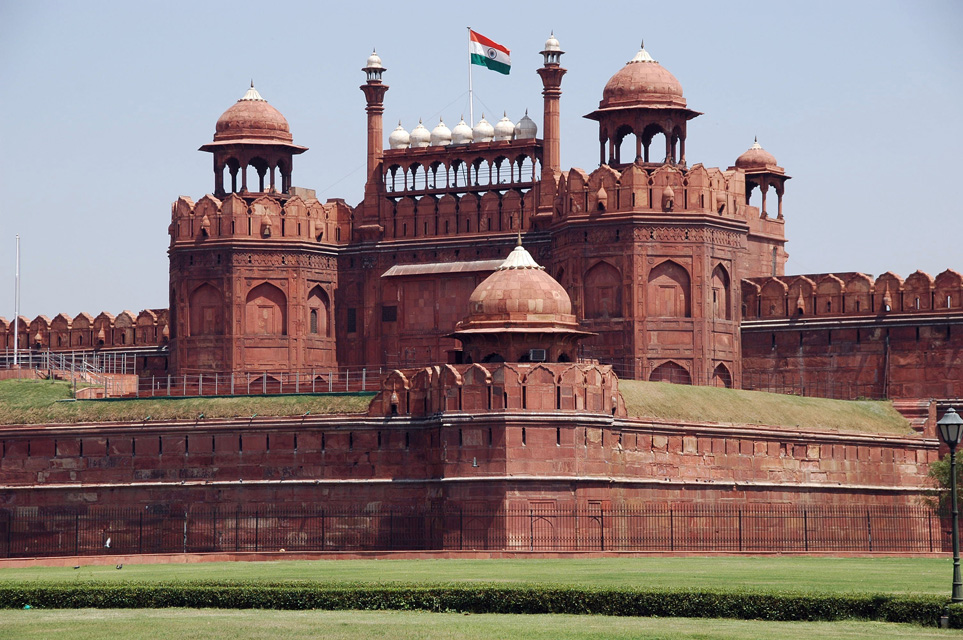
Red Fort : Purchased or Adopted by Dalmia Group?
Red Fort : Purchased or Adopted by Dalmia Group?
- Darshan Borana
After so much of criticism of Modi Government we all came to know about
the fact that Central Government has Sold or Given our heritage in the hands of
corporate world to earn profit. And after so much of Ruckus in public and
mainly in national media we came to know about a exciting fact that Red Fort
has been given in the hands of Dalmia Group. There is a lot of public outrage
and people marched in front of India Gate and their basic question is that who
has given the right to the government to “Sell” our national heritage or
whether the Indian Government do not have that much amount to provide the basic
amenities in our Heritage. One of the interesting fact also came up that Dalmia
Group is going to give 50 million rupees to Indian Government every year for
the next five years. The main and pertinent question here is that whether all
this is true or few people are just fabricating the facts to mislead the public
to create outrage amongst them.
The pertinent questions came up in relation to this issue are:
·
Whether government has sold our heritage to corporate
world for the next five years or it still has its say in it?
·
What exactly the scheme under which government is
giving the heritage to the corporate world?
·
What is the main motive behind providing the heritage
to corporate world?
·
Which law provide the right to the Central Government
to give our heritage in the hands of corporate world?
With all this pertinent question and to find their answers we came to
know about the Scheme launched by President Ram Nath Kovind named as “Adopt a
Heritage : Apni Dharohar, Apni pehchaan” on September 27 which is called as
“World Tourism Day”. President said that “Adopt a Heritage Project launched on Wednesday, with the
efforts of the Tourism Ministry, Culture Ministry and Archaeological Survey of
India, has great potential to make our rich and diverse heritage monuments,
tourist-friendly”
The “Adopt a
Heritage : Apni Dharohar, Apni pehchaan” is a scheme of Ministry of Tourism in
collaboration with Ministry of Culture and Archaeological Survey of India. Under it, the government invites entities,
including public sector companies, private sector firms as well as individuals, to develop selected
monuments and heritage and tourist sites across India. Development of these
tourist sites calls for providing and maintaining basic amenities, including
drinking water, ease of access for the differently abled and senior citizens,
standardised signage, cleanliness, public conveniences and illumination, along
with advanced amenities such as surveillance systems, night-viewing facilities
and tourism facilitation centres. The sites/monument are selected on the basis of
tourist footfall and visibility and can be adopted by private and public sector
companies and individuals — known as Monument Mitras — for an initial period of
five years. The Monument Mitras are selected by the ‘oversight and vision
committee,’ co-chaired by the Tourism Secretary and the Culture Secretary, on
the basis of the bidder’s ‘vision’ for development of all amenities at the
heritage site. There is no financial bid involved. The corporate sector is
expected to use corporate social responsibility (CSR) funds for the upkeep of the site. The Monument Mitras, in
turn, will get limited visibility on the site premises and on the Incredible India
website. The oversight committee also has the
power to terminate a memorandum of understanding in case of
non-compliance or non-performance.
The Part-IV Directive Principles of State Policy Article 49 of the
Constitution of India states that it shall be the the obligation of the State
to protect every monument or place or object of artistic or historic interest,
[declared by or under law made by Parliament] to be of national importance,
from spoliation, disfigurement, destruction, removal, disposal or export, as
the case the may be. So it is clear that it is the duty of the State to provide
basic amenities or protection to our Heritage and the “Adopt a Heritage” scheme
is to provide the basic amenities in the heritage not a sell out.
We all now came to know about a term called as CSR what is it. It is
know as “Corporate Social Responsibility” which means how companies manage their business
processes to produce an overall positive impact on society. It covers
sustainability, social impact and ethics, and done correctly should be about
core business - how companies make their money - not just add-on extras such as
philanthropy. That mean that the main Idea behind the “Adopt a Heritage” scheme
is to provide an opportunity to corporate to complete their CSR activity
through this scheme which currently Dalmia Group is doing by adopting Red Fort.
Now the major question
is whether the government has wholly give up its right in the Heritage or its
still has a say in it. After reading the MoU signed by the parties between the
government and its different agencies and the Dalmia Group it is clearly stated
under the part B sub part 11 that all the work which is to be done shall not be
implemented without the prior permission of the “Monument Committee” and there
are different other committees also named as “Oversight and Vision Committee”,
Implementation Committee”, in which government shall appoint its member which
shall regulate the functioning of the Corporate and monitor its work in Heritage.
With all this we came to
know that Ruckus created in the mind of general public is base on false facts
and that the Adoption of Red Fort by Dalmia Group is under its Corporate Social
Responsibility in “Adopt a Heritage” scheme and is not a “Sell-Out”.
By
Darshan Borana,
Intern,
1st year,
National Law University, Odisha.
Reference –
http://www.thehindu.com/news/national/what-is-adopt-a-heritage-scheme/article23866697.ece












